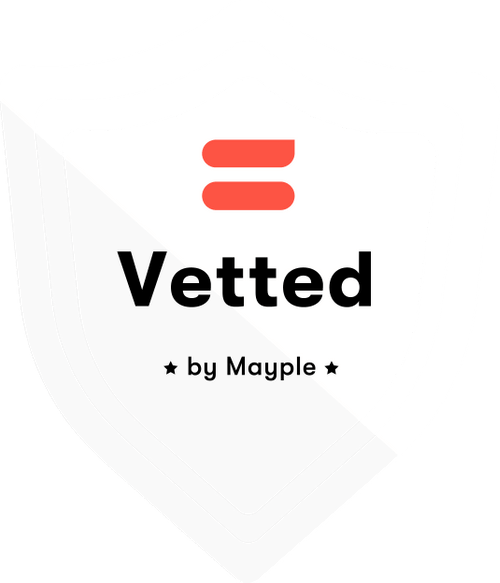As with most entrepreneurs, startup founders are experts in their respective fields. They understand the product intimately. They have calculated the margins, successfully raised the necessary funding, and may have even nailed the branding. Now, all they need are the customers!
Enter: digital marketing. Digital marketing is, at once, a simplified version of traditional age-old marketing and a minefield of unforeseen complexities.
And while so many startups are technology-based, the mechanisms of digital marketing can seem daunting. Many startups avoid it or hire agencies with little experience in their innovative idea. This can lead to either a lack of focus or difficulty incorporating the branding they spend so much time on into their web presence.
In this blog post, we will cover some key considerations for creating a digital marketing plan for early-stage startups.
Before All, Set Your Goals
To know what you need in terms of ROI from the onset, you must set a goal in line with your business plan. From there, you can calculate backward how many impressions or sets of eyeballs you will need to accomplish that goal, using conservative industry standard benchmarks.
Sales
For example, you have told investors that you estimate selling 5,000 units in five years. Assuming a 10% year-over-year growth rate, 5,000 sales over five years and work backward gives you about 800 units as your first-year goal minimum.
Market Qualified Leads (MQLs)
Now, let’s say that we’ve got a conservative 20% sales rate. Although that’s probably low, we’ll use that as a benchmark, which would require us to acquire about 4,000 qualified leads to obtain your first-year minimum goal.
Top-of-Funnel Leads
To hit our goal, factoring an industry-standard 13% lead-to-opportunity rate, would need around 31,000 contacts that year to get that from your web presence. Contacts from your web presence can come from anything, your website, social media, email platforms, etc.
Visits/Impressions
You would need 787,000 clicks or visits to your website, opens of your emails, social media ads, etcetera. And for that, you would need 5 million impressions or eyeballs to see all of your content output, whether it’s the
- amount of people that you’ve emailed
- number of impressions for paid search
- number of impressions through organic search
- reach in social media platforms like Facebook or Instagram ads
This would be your kind of annual breakdown, and I want to use that as an example to get across the idea of setting your goal and then working backward to know what’s needed.
If we are talking 5 million impressions, and we’ve calculated for a monthly 10% growth rate, we would want to start Month One with about 250,000 impressions. Keep that number in mind.
What Is Your Current Online Visibility?
If you are brand new, the current status of your online visibility is zero. Say you have been around for six months to a year or perhaps longer, and haven’t made marketing a focal point. You built a website and perhaps have started with an agency doing pay-per-click ads.
You may have started building a list and been emailing people. But if the number of people doesn’t jibe with your needed impressions, then you’ve got a problem and you need to think about how you can expand your online reach.
Market Research: Figure Out The “Who” and “Why”
The next stage is market research.
Often, this is a business’s first step, rather than goal setting, though it’s best to figure out goals first and then find out how large of a market you’ll need to sustain your business. At times, businesses will select a market, but it may be far too niche to accomplish their goals.
If it’s too small, then you may need to expand your market, if that’s even possible. If you’ve based your entire business plan on a market that can’t sustain your bottom line, you may be in trouble!
So, we’ll start with a single market, and then we will look to see how we can aggregate that market into a larger field if necessary.
Market Segmentation
You want to start with segmenting your market or defining your target audience. This includes understanding their needs, their goals, preferences, demographics, and characteristics.
Are you targeting busy parents in cold climates? Are you looking to reach a diverse audience of Gen Z professionals nationwide? Or perhaps hospitals that need a new technology that you’ve created? Understanding your target audience will help you develop marketing strategies and tactics tailored to your specific needs and interests.
To begin, you will want to segment those markets. From there, identify the most effective channels for those particular audiences. You want to create journeys per client profile, and then you want to measure their efficacy. Lastly, you’ll want to develop a budget for which you can do as much as possible. This helps you know where your limitations are. Whether that’s hiring, bringing somebody in-house, or doing as much gorilla marketing as possible.
Next Step in Digital Marketing Plan: Content Strategy
Once you’ve done your market research, focus on your content strategy. A good rule of thumb for the content strategy is that it needs to be based on your buyer personas.
Say you’ve created around 5 buyer personas in your market segmentation. What are their motivations? That’s the next step in our plan.
What is driving them? Where do they research solutions online? What are the pain points that your product or service can help to solve? It needs to be more about the person’s motivations than the product itself.
Scenario: you are selling some revolutionary new machine that turns water into wine at the push of a button.
Search Intent
People may not know this exists and won’t be searching for “water into wine machine.” Instead, they may be searching for “how can I find affordable alcohol to purchase” or “what’s a way that I can make wine in bulk.”
These are the motivations where you’d say to yourself “hey, here’s a solution to that problem.” By doing that, it can help you do the beginning step in the content strategy, which is going to be keyword research.
Once you’ve defined the audience into personas, you provide content that meets their needs. Gain an understanding of these buyer persona problems and motivations. Performing your keyword research and search intent analysis on these factors, you can create tailored content that either solves that problem or at least provides expert information about that problem. Being a subject matter expert, you put this into a digital asset management system that houses and tracks:
- Content brief creation for producing new content
- Keywords for PPC campaigns
- On-page optimization, or how you improve the pages on your website so they’re more visible concerning search
- Conversion rate optimization (CRO), which is highly dependent on the content that people read on-page
- Digital PR outreach team so that you’re creating content to send to other agencies or publisher sites and hopefully link back to your site
You’ll want to identify the channels and what the content will tell you about what medium you want to go in. If you have a large educational lift, meaning people are unaware of your service or don’t know what it is, educate them on why your product is going to help them. Media content is beneficial for this type of educational channel, specifically audio.
Visual media is really good for quickly and easily educating somebody on something that may be very difficult. And often, you’ll want to keep that short, especially in the beginning. If you use a medium like Instagram or TikTok, you’ll want to keep it under a minute. However, if you’re talking about a complex subject that requires more time, platforms like YouTube would be a good start.
So, What Should You Do Next?
Once you determine all of this, you can create your marketing plan based on this with an eye to what your goals are, and what the critical mass is that you’ll need every month to reasonably achieve your goals.
Incorporate a measuring system such as data intelligence, which refers to the tracking of your data, analysis of it, and being able to understand it regularly via reporting.
I usually recommend some data visualization system like Google Looker Studio (Formerly Data Studio), or something even more enterprise-level, to help you make sense of the incoming data. You’ll get a clear-cut look into:
- How many times people are touching your content
- Which channels or pages are working or aren’t
- The journey of a qualified lead — whether it starts with PPC and ends with a contact form, or they get on your email list and visit your site, or if they Googled your brand a week later and visited your site to fill out a more direct request for information
All of these things help you know what is or isn’t working down the funnel. You can then make changes to those regularly. And you can use this data to make changes to your content, to your journeys, to any point along the path that is underperforming. These are iterative processes that improve over time, if you plan intelligently, measure properly, and adapt accordingly.
So, what are you waiting for?


